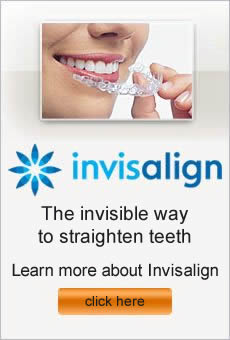If you think your child needs braces, you may feel a bit overwhelmed. Most parents have questions about costs, timing, and other issues with treatment. The following questions and answers will help you gather the information you need to make the best decision for your child. Once you start orthodontic treatment, your orthodontist can provide clarity and guidance.
When should I take my child to the orthodontist?
According to the American Association of Orthodontists, children should have an orthodontic evaluation by age seven. Certain problems are easier to treat while children are still growing.
Will my child need to have teeth extracted?
New technology and advanced procedures mean that most of the time, teeth are not extracted for orthodontic treatment. Your orthodontist will know more after a thorough examination.
Can my child still play an instrument or participate in sports?
Definitely. Your child may need a little time to adjust to playing a wind or brass instrument with braces, but the treatment shouldn’t inter with musical participation. For athletes with braces, we recommend a mouth guard for protection.
How long will treatment last?
Every case is different. The time frame for orthodontic treatment depends on many factors including the severity of the issue, patient cooperation, and how quickly teeth move. An average treatment course for braces is about two years.
Will my child’s teeth move after treatment?
Once the braces come off, it is important for your child to wear his or her retainer as instructed by the orthodontist. Though teeth shift some as we age, the retainer should help stabilize the position of the teeth and give your child a gorgeous smile for life.
Dr. Mehdi Fotovat is an Orthodontist located in Sherman Oaks CA. – Burbank Orthodontist – WebBraces.com
When you have braces or other orthodontic appliances, your teeth need special care. Making sure to follow proper oral hygiene steps will ensure optimal results and prevent any treatment delays. These tips will help you take good care of your teeth and gums during treatment.
• Brush your teeth after eating meals and when you snack so that food doesn’t get trapped between braces.
• If you can’t brush right away, rinse your mouth with water.
• Make sure to floss at least once a day.
• Flossing may be more difficult so ask your orthodontist about floss threaders, which will help you get the floss between your braces. Waxed floss may work better because it won’t fray.
• Find out if your orthodontist has any special recommendations about the toothbrush you should use. You can find toothbrushes designed to make brushing more efficient, including V-shaped brushes, brushes that bend at the neck, and round hard brushes.
• Use toothpaste with fluoride, which will give your teeth extra protection against decay.
• Avoid hard or sticky foods like bubble gum, caramel, or nuts while you have braces because these items can damage brackets.
• Limit soft drinks because they are very acidic and may cause decalcification, a precursor to tooth decay, around your brackets.
• Schedule regular checkups with your dentist at least every six months. Depending on your situation, the dentist or orthodontist may recommend more frequent visits while you have braces.
• Don’t pull or pick at your braces.
Orthodontist in Sherman Oaks, California – Dr. Mehdi Fotovat – Burbank Orthodontist – WebBraces.com
Did you know that 25 percent of patients seeking orthodontic treatment are adults? You are never too old to enjoy the benefits of a beautiful smile. Not only will straightening your teeth boost confidence, but it will also improve your oral health because crooked teeth are harder to brush and floss properly.
If you are considering orthodontic treatment, these basics points will help you make an informed decision about your options.
How is adult treatment different than orthodontics for kids?
Because older patients are no longer growing, orthodontic treatment at this point is designed help adults attain a vibrant, healthy smile.
Do I have to wear metal braces?
Thanks to advances in orthodontics, adults have more discreet choices for straightening their teeth. Ceramic brackets, lingual braces, and Invisalign clear aligners allow you to achieve an attractive smile without compromising your mature image.
My teeth have been crooked for years. Why should I consider treatment now?
Your smile will not only look better, but your teeth and jaws will function better if they are in proper alignment.
How long will treatment take?
Though it is difficult to predict the exact time frame, your orthodontist will give you an estimated time table based on your case and expected progress. The average time for treatment is 18 to 24 months.
Can orthodontic treatment help with jaw pain?
If misalignment is the cause, correcting your bite should help with the discomfort. If your pain is caused by clenching and grinding at night, your orthodontist can fit you for a night guard.
It’s time to schedule a visit to our Sherman Oaks, CA orthodontic office – Mehdi Fotovat, DDS.
As you check out orthodontic treatment for yourself or a family member, it’s important to make sure you have accurate information. Plenty of faulty ideas and folklore have been heralded as orthodontic gospel. Get your facts straight as you check out this list of common orthodontic myths:
Myth: I can have my family dentist straighten my teeth
Reality: Just like people visit a neurologist, not a family doctor, for issues relating to the brain, you should see an orthodontist to correct alignment and bite problems. Beyond regular dental school, orthodontists complete another two to three years of advanced training relating to the function and fit of teeth.
Myth: Only kids need braces.
Reality: A little less than 20 percent of orthodontic patients are 18 years or older. Not only will a straight smile look fantastic, but it also makes brushing and flossing easier, which can improve oral health.
Myth: I can download songs onto an iPod off signals from my braces that link to the Internet.
Reality: Though this would be a great selling point for young patients, it’s not possible at this time.
Myth: Orthodontic treatment takes two years and is very painful.
Reality: Braces aren’t one-size fits all. Treatment time depends on your specific case, ranging from a few months to a couple of years. As for discomfort, you may experience some initial soreness, but after the adjustment period, most people have few complaints.
Myth: All braces are ugly and embarrassing.
Reality: While traditional metal brackets aren’t the most appealing choice, newer options exist for less noticeable orthodontic treatment. Many kids and teens choose brightly-colored wires and brackets to add flare to their orthodontia. Adults who want to preserve their professional images may want to consider Invisalign clear braces, lingual braces that go on the back of the teeth, or ceramic brackets.
Mehdi Fotovat, DDS. Sherman Oaks California orthodontics – we care about you and your smile!
Although most people don’t love the idea of wearing braces, it doesn’t usually create any major problems. For some individuals, though, orthodontic treatment with braces is a bigger deal. Over time, some people develop sensitivity to nickel, a common metal found in jewelry, watches, and clothing. Unfortunately, nickel is a component in metal braces as well as in the wires and auxiliary pieces used during treatment.
Research indicates that more people have a reaction to nickel than to all other metals combined. This sensitivity occurs when the immune system responds to the foreign substance. More females than males exhibit problems with nickel, which may be attributed to other contact with nickel such as with watches, earrings, metal buttons, and even detergent. Symptoms may include a rash on the skin and lesions in the mouth.
One of the reasons for the increase in nickel sensitivity cases is the popularity of body piercing. The jewelry used for these piercings usually contains nickel. While the initial exposure to the nickel may not cause a reaction, full symptoms may develop with subsequent exposure.
If you or a loved one has sensitivity to nickel, talk with your orthodontist about other options. Often, stainless steel components, which are only about eight percent nickel, will work better than other metal appliances. Ceramic, plastic, gold-plated, and titanium brackets are other alternatives to consider as well as Invisalign. In some cases, a reaction may not develop until after treatment has started. Contact your orthodontist right away if you notice any signs of nickel sensitivity.
We love to see you smile at our orthodontic dental practice in Sherman Oaks, CA – Mehdi Fotovat, DDS



